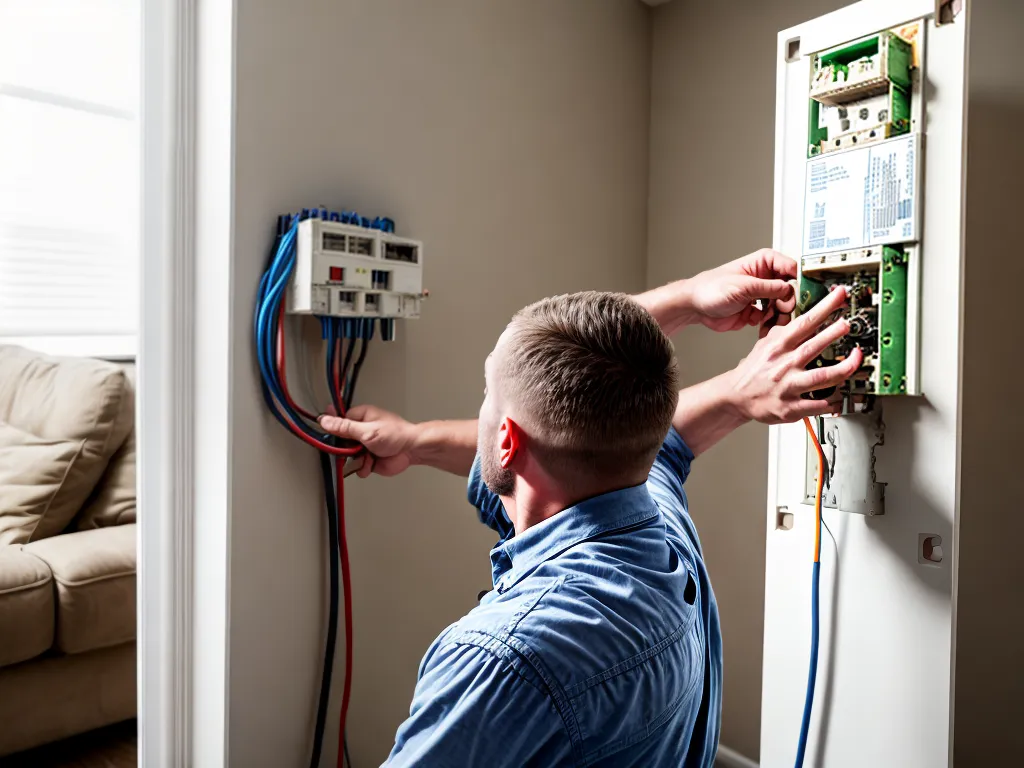
How to Troubleshoot 3-Phase Power Problems in Your Home
Introduction to 3-Phase Power
Three-phase power is commonly used in large commercial and industrial applications, but can occasionally be found in residential settings as well. A 3-phase system uses three hot wires, each carrying alternating current 120 degrees out of phase from each other. This allows for a more efficient and balanced delivery of power compared to single-phase systems.
Some key things to know about 3-phase power:
-
It provides continuous power - With 3 phases, there is always at least one hot wire delivering voltage to loads. This results in smoother power delivery.
-
It can handle larger loads - Each phase shares the load, allowing a 3-phase system to power larger equipment like heavy machinery.
-
The phases must be balanced - For proper operation, each phase must deliver the same voltage and draw the same current as the others. Imbalances can cause problems.
-
Wiring is more complex - 3-phase systems require 4 wires - 3 hot wires plus a neutral. The greater number of wires makes installation and troubleshooting more complicated.
Common 3-Phase Power Problems
Some typical issues that can occur with 3-phase power systems:
1. Unbalanced Voltages
-
This is when the 3 phases deliver unequal voltages. Can cause motor issues.
-
Check voltage on each hot wire to ground. They should be within 1% of each other.
-
If unbalanced, check connections and wiring. May need to call an electrician if the issue is upstream.
2. Open Neutral
-
Neutral carries unbalanced current back to source. If broken, can cause voltage problems.
-
Check for 0 volts between neutral and ground. If not 0V, neutral is open.
-
Inspect wiring and connections. Replace damaged neutral wire.
3. Phase Loss or Reversal
-
Losing 1 phase or reversed phase sequence prevents proper operation.
-
Motors won't start, equipment overheats, or circuit breakers trip.
-
Check for correct phase sequence. Should be A-B-C clockwise.
-
Check for power on each phase coming into the circuit panel.
-
Faulty wiring or blown fuse. May need an electrician.
4. Short Circuits
-
Shorts can occur phase-to-phase or phase-to-ground. Very dangerous!
-
Check for extremely high current draw on circuits.
-
Locate shorted wiring and replace. Ensure insulation is intact.
-
Reset tripped breakers, replace blown fuses. Call electrician if needed.
How to Troubleshoot Step-by-Step
Follow these steps to systematically troubleshoot 3-phase problems:
Safety First!
-
Working with 3-phase power can be dangerous. Turn off power at the main breaker before testing.
-
Wear personal protective equipment for electrical safety.
1. Identify the Issue
-
Note what equipment is affected and specific symptoms occurring.
-
When did problem start? Any recent electrical work done?
-
Check if single phase circuits are affected or only 3-phase.
2. Check Voltage and Phase Rotation
-
Check voltage and phase rotation at the service entry and affected circuits.
-
Compare voltages on all 3 phases. Should be balanced within 1%.
-
Correct phase sequence is A-B-C clockwise.
3. Look for Faults
-
Inspect all wiring connections to check for loose, damaged wires.
-
Look for signs of shorts like melted insulation.
-
Check fuses/breakers related to problem circuit.
4. Test Components
-
Check motors and equipment along the affected circuit.
-
Look for failed bearings, insulation damage, overheating.
-
Check load balancing across 3 phases.
Call an Electrician if Needed
-
If cause is not found, problem may be upstream or in service wiring.
-
Only qualified electricians should work on 3-phase service entry components.
Preventative Maintenance
-
Annually check voltage balance and phase rotation.
-
Inspect wiring condition, tighten connections.
-
Look for signs of overheating in motors and equipment.
-
Ensure proper load balancing across phases.
-
Have an electrician inspect service entry and panels periodically.
Conclusion
Troubleshooting 3-phase issues takes basic electrical knowledge and caution. Start by identifying the problem. Check voltages, wiring, and connected loads systematically. Repair simple issues found, but call a professional for unseen service entry problems. With preventive maintenance and quick response to problems, 3-phase systems can provide reliable power.